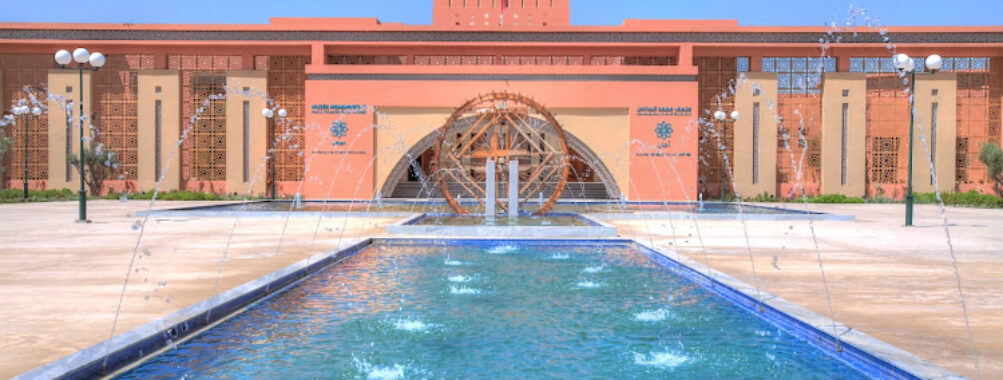
Water Museum
Table of Contents
Description
The Water Museum in Marrakesh is one of those places that quietly surprises you. It’s not the kind of museum where you shuffle through endless glass cases of dusty objects—this one feels alive, almost like the story of water itself is being told right in front of you. The focus is on Morocco’s long and fascinating relationship with water: how it’s been sourced, preserved, and celebrated in a land where every drop matters. Some visitors walk away saying it’s a hidden gem, while others feel it’s a bit niche. Honestly, it depends on what you’re looking for. If you’re curious about culture, history, and the way people adapt to their environment, this museum will keep you hooked. If you’re expecting flashy exhibits or high-tech displays, you might find it a little understated. Personally, I think that’s part of its charm—it’s authentic, thoughtful, and it makes you slow down and actually think about water, which we often take for granted.
Families often enjoy it too, since the museum is kid-friendly without being overwhelming. There’s enough visual storytelling to keep younger visitors engaged, and the fact that it’s wheelchair accessible with free parking makes it practical for all kinds of travelers. It’s one of those places that feels welcoming, even if you’re just dropping by for an hour between other Marrakesh adventures.
Key Features
- Exhibits that explore Morocco’s ancient water systems, including underground channels and traditional irrigation methods.
- A focus on the cultural and spiritual symbolism of water in Moroccan life.
- Interactive displays that explain how water shaped architecture, agriculture, and daily living in Marrakesh and beyond.
- Child-friendly sections that make learning about water fun and accessible.
- Wheelchair accessible entrances, restrooms, and parking for inclusive access.
- Quiet atmosphere, offering a break from the hustle of Marrakesh’s busy streets.
- Free parking lot, making it easier for those driving in from outside the city.
Best Time to Visit
While the museum is open year-round, the best time to visit is during the cooler months, roughly October through April. Marrakesh can get blisteringly hot in summer, and while the museum itself is indoors, you’ll probably be combining it with other sightseeing. Cooler weather makes the whole experience far more enjoyable. Mid-mornings tend to be quieter, which is perfect if you like to wander without crowds. I once popped in on a late afternoon in spring, and it was practically empty—just me and a couple of curious travelers, which made it feel like a private tour. If you’re traveling with kids, mornings are usually better since everyone has more energy and patience.
How to Get There
Reaching the Water Museum is straightforward if you’re staying in Marrakesh. Taxis are plentiful and affordable, and most drivers know the location well enough. If you’re driving, there’s the added bonus of a free parking lot, which is rare in a city where parking can be tricky. Public transportation isn’t the most reliable option here, so I’d recommend either a taxi or your own car. And if you’re like me and prefer walking, keep in mind that Marrakesh’s streets can be a bit chaotic—fun, yes, but also tiring. A taxi will save you the hassle, especially if you’ve already spent the morning exploring the souks.
Tips for Visiting
First off, don’t rush. Even though the museum isn’t massive, it’s worth taking your time to really absorb the exhibits. Bring water with you—yes, ironic, but Marrakesh heat is no joke. Since there’s no restaurant on-site, plan to eat before or after your visit. If you’re traveling with kids, maybe bring along a snack for them, as you’ll want to keep them comfortable while you explore.
Photography is usually allowed, but be respectful and avoid flash if there are sensitive displays. And here’s a little personal tip: read up a bit on Morocco’s ancient water systems before you go. When I did that, I found myself appreciating the exhibits so much more because I could connect the dots between what I’d read and what I was seeing.
Lastly, keep an open mind. Some people expect big, flashy museums with lots of interactive screens, and when they don’t find that, they leave disappointed. But if you approach it as a chance to step into Morocco’s relationship with water—a story of survival, ingenuity, and deep respect—you’ll walk away with a whole new perspective. And honestly, that’s what travel should be about, right? Gaining new ways of seeing the world.
Location
Places to Stay Near Water Museum
Find and Book a Tour
Explore More Travel Guides
No reviews found! Be the first to review!